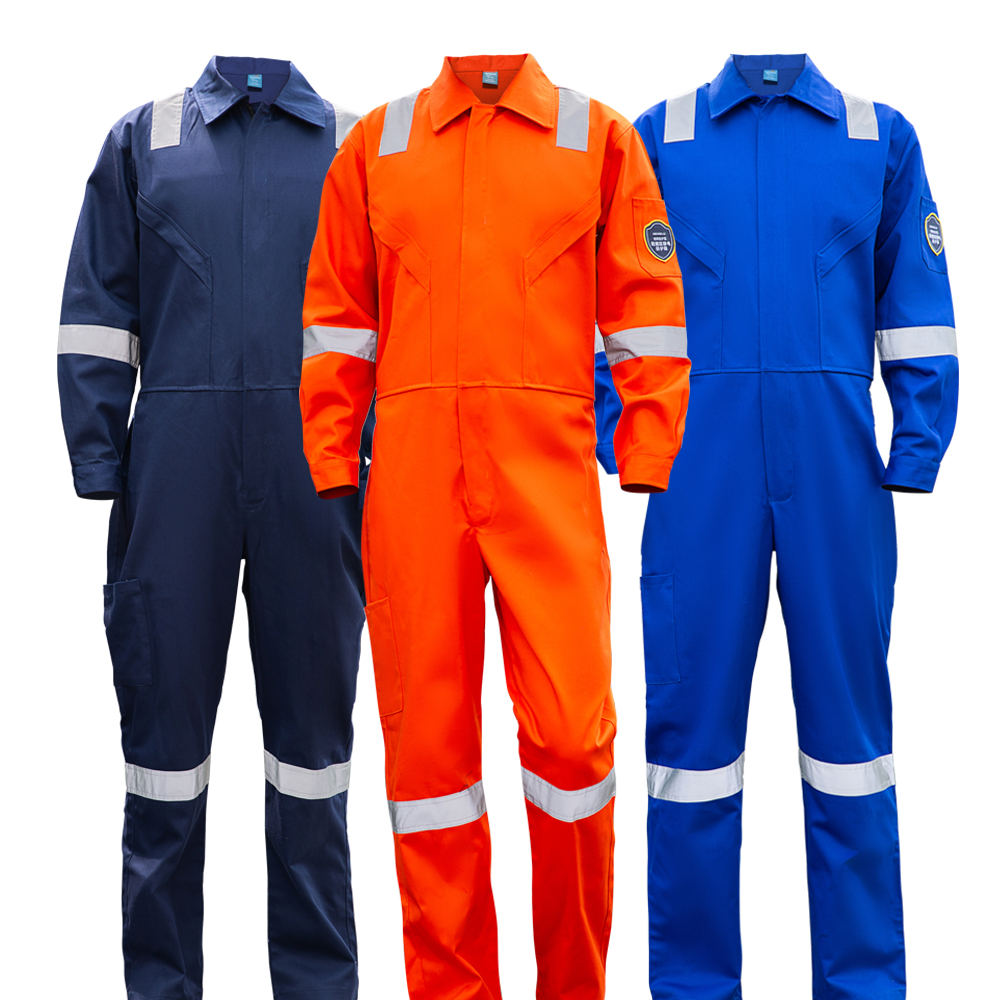Oil and gas Protective clothing
Author:HAIYUAN TIME:2025-09-18Read:
Protective clothing for the oil and gas industry is a critical component of Personal Protective Equipment (PPE), designed to protect workers from multiple, severe hazards. The core principle is hierarchy of control: first, prevent an incident (e.g., ignition); then, protect the worker if an incident occurs. Here is a detailed guide to oil and gas protective clothing.
The Two Foundational Hazards and Protections
The best clothing addresses both of these life-threatening risks in a single garment:
- Static Electricity (ESD - Electrostatic Discharge)
- Hazard: A single static spark can ignite flammable vapors, gases, or dust, causing an explosion or flash fire.
- Protection: Anti-static/ESD properties. Garments are made with conductive fibers (e.g., carbon or metal threads) woven into the fabric. This creates a path for static charges to dissipate safely to the ground, preventing a spark.
- This is the PRIMARY line of defense.
- Fire and Extreme Heat (Flash Fire & Arc Flash)
- Hazard: An accidental release of hydrocarbons or an electrical arc flash can create a intense, short-duration fireball.
- Protection: Flame Resistance (FR). FR fabrics are designed to self-extinguish once the ignition source is removed. They resist burning and char instead of melting, providing critical extra seconds for a worker to escape and significantly reducing burn injuries.
- This is the SECONDARY line of defense.
The gold standard is clothing that integrates both ESD and FR properties.
Key International Standards and Certifications
Always look for these certifications on the garment's permanent label. They are your guarantee of protection.
Types of Protective Clothing and Their Uses
Top Brands and Manufacturers
- Industry Giants (Comprehensive Solutions): Carhartt FR, Ariat FR, Wrangler FR. Known for durability, comfort, and style in daily wear.
- FR Specialists: Bulwark FR, Workrite FR, Tyndale. These companies focus exclusively on FR/ESD safety and are often suppliers for major oil companies.
- Technical Safety Manufacturers: Lakeland Industries, Dräger, Kermel. Offer high-performance garments for the most hazardous environments, including multi-risk protection (chemical splash, heat, flame).
- Specialized Global Producers: Companies like Shijiazhuang Haiyuan in China are crucial manufacturers that produce certified FR Anti-Static workwear meeting international standards (EN ISO 11612, EN 1149-5), which are widely used in the global oil and gas sector.
The Complete PPE System
Protective clothing is just one part of the system. A fully protected worker must also have:
- Head Protection: Hard hat (ANSI Z89.1 / EN 397) often with attached hearing and eye protection.
- Eye & Face Protection: Safety glasses (ANSI Z87.1 / EN 166) and face shields for grinding or chemical handling.
- Hand Protection: Task-specific gloves (leather for abrasion, rubber-coated for chemicals, FR for thermal risks).
- Foot Protection: Safety boots with steel/composite toes (ASTM F2413 / ISO 20345), EH (Electrical Hazard) rating for static dissipation, and metatarsal guards.
- Fall Protection: For working at heights.
- Hearing Protection: Earplugs or earmuffs in high-noise areas.
Final Recommendation
When selecting or procuring protective clothing for oil and gas:
- Conduct a Hazard Assessment: Identify all specific risks (static, flash fire, arc flash, chemicals, weather).
- Prioritize ESD + FR: Never compromise on garments that combine both static dissipation and flame resistance.
- Demand Certification: Insist on seeing the official certification labels (NFPA 2112, EN 1149-5, etc.) for the garments.
- Consider the Entire System: Ensure all PPE items are compatible and don't interfere with each other.
- Follow Company Policy: Always adhere to your company's specific Safety and PPE guidelines, which will detail the approved standards and brands for your worksite.
Your clothing is your primary daily defense. Investing in certified, high-quality, and comfortable protective wear is non-negotiable for safety in the oil and gas industry.

